The project that started in 2005 for Nihonbashi River, located in Japan and which separates from the Kanda River near JR Suidobashi station, had great results. As a consequence, the project was extended to the Kanda River and even the moat.


Nihonbashi River, which separates from the Kanda River near JR Suidobashi station, is a first-grade river of 4.8km in length that flows into the Sumida River. The river was dug in the early Edo period, and the river was the main line of logistics to support the city of Edo. After World War II, although people still could swim in the river, during the period of high economic growth it steadily grew polluted. Further, after it was covered by a highway, it became less a part of people’s daily lives. The original starting point of Japan’s road system, the landscape of “Nihonbashi” is severely hampered by the highway. People are proceeding with a plan to recover the blue sky over Nihonbashi by dismantling the overpass.
Hoping that, when the blue sky returned to Nihonbashi, the Nihonbashi River would be once again be a clear-running-river, people began their efforts to improve the water system under the slogan “Revive the Nihonbashi River!” By then, the use of EM had been successful in cleaning the Asechi River, and organizations such as the Historic Bridge “Nihohnbashi” Preservation Society and the not for profit organization Bring Back Clean Water in Nihonbashi River・Kanda River, have implemented this activity utilizing EM along the Nihonbashi River with the cooperation of companies and civil organizations.
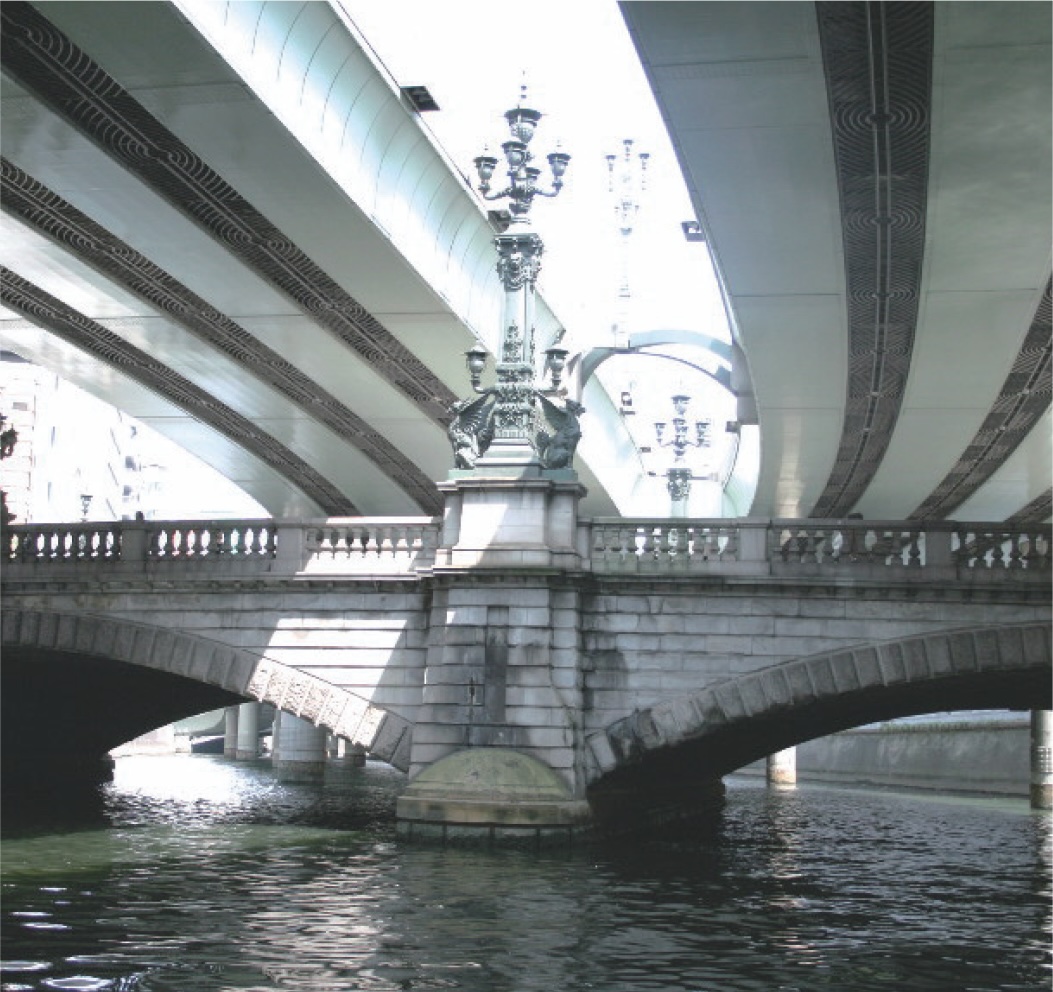
Nihonbashi River and bridge covered by the highway
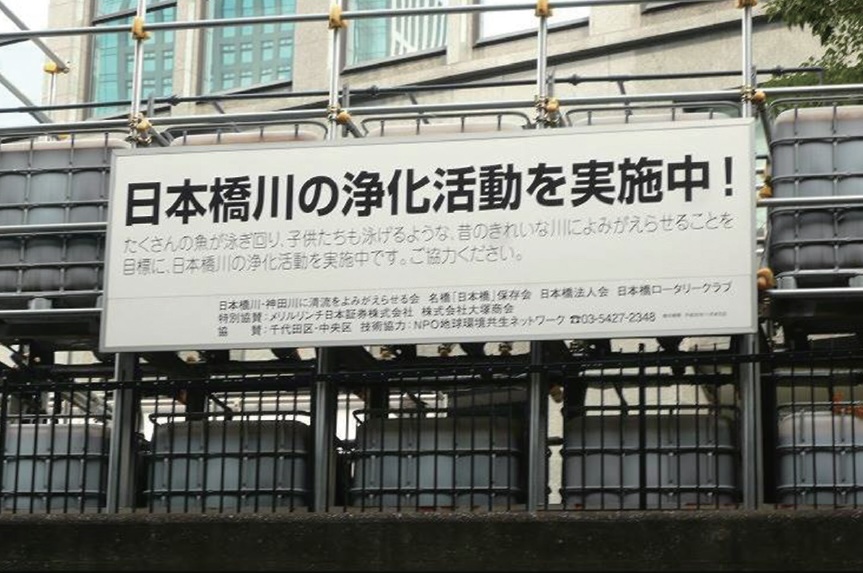
Sign board:
Conducting purifying activities for the Nihonbashi River!
With the aim of reviving the old beautiful river where many fish and children can swim, we are undertaking purification activities on the Nihonbashi River.
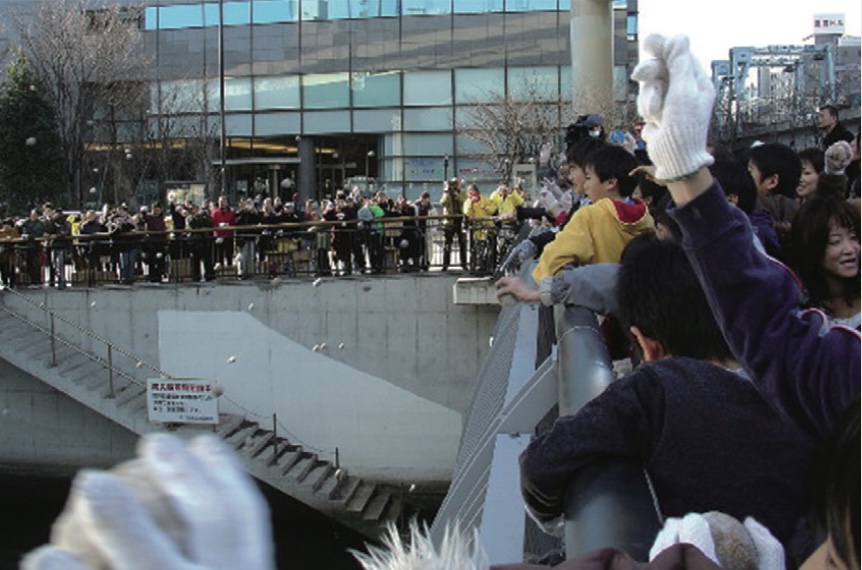
Volunteers throwing EM Mudballs to the Nihonbashi River


In June 2006, three organizations: the Historic Bridge “Nihonbashi” Preservation Society, the Nihonbashi Corporation Association and the Nihonbashi Rotary Club decided to implement a project to clean up Nihonbashi River with technical support from U-net (United Networks for Earth Environment, NPO), and looked for a location to install Activated EM production equipment.
Chiyoda-ku decided to rent a place where the 20 town councils and corporate wards founded the “Revive Clean Water in Nihonbashi River and Kanda River Group”. Here, they started the construction of an Activated EM production facility in September 2006, and was completed in December of the same year.
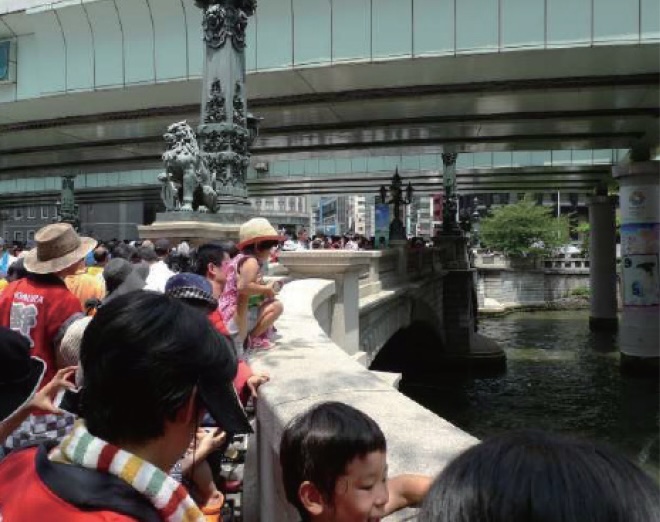
The Historic Bridge "Nihonbashi" Preservation Society. Throwing EM Mudballs into the river at the annual "Nihonbashi" cleanup event.
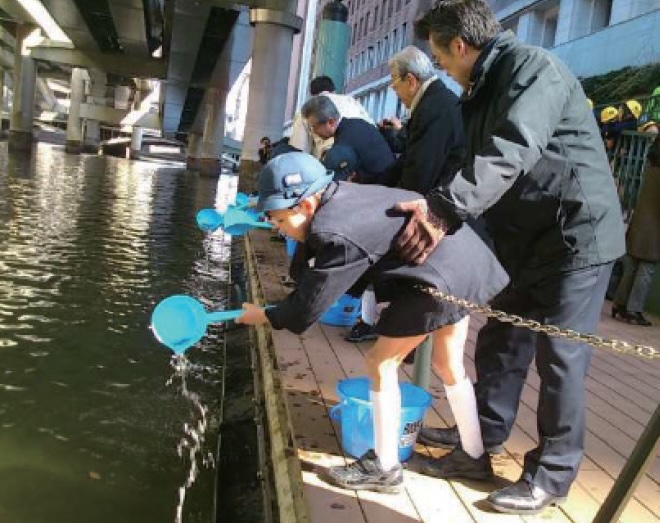
Under the slogan of "Bring back Salmon to Tokyo Bay", releasing salmon fry into the Nihonbashi River, an activity that began in 2012
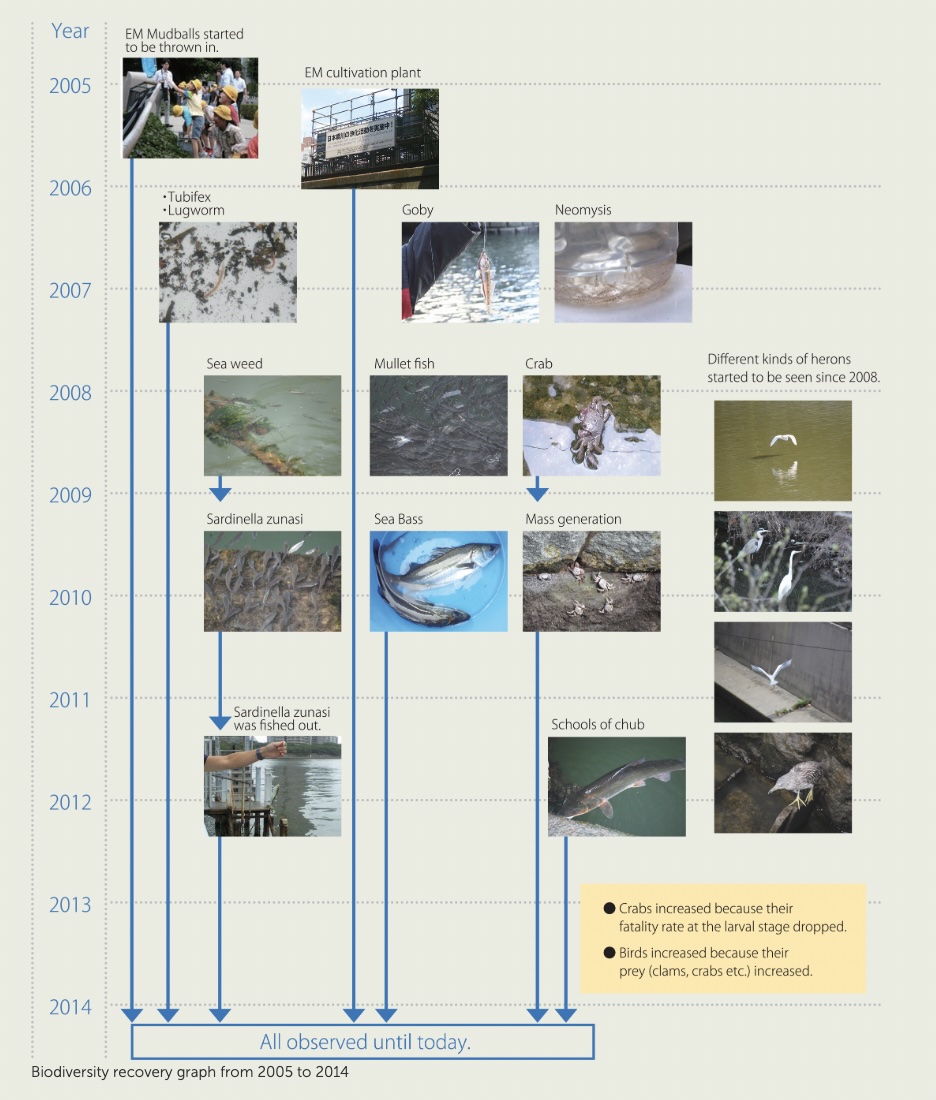
Biodiversity recovery graph from 2005 to 2014
Continue reading how this proyect changed the area.
2019.8.16 Updated